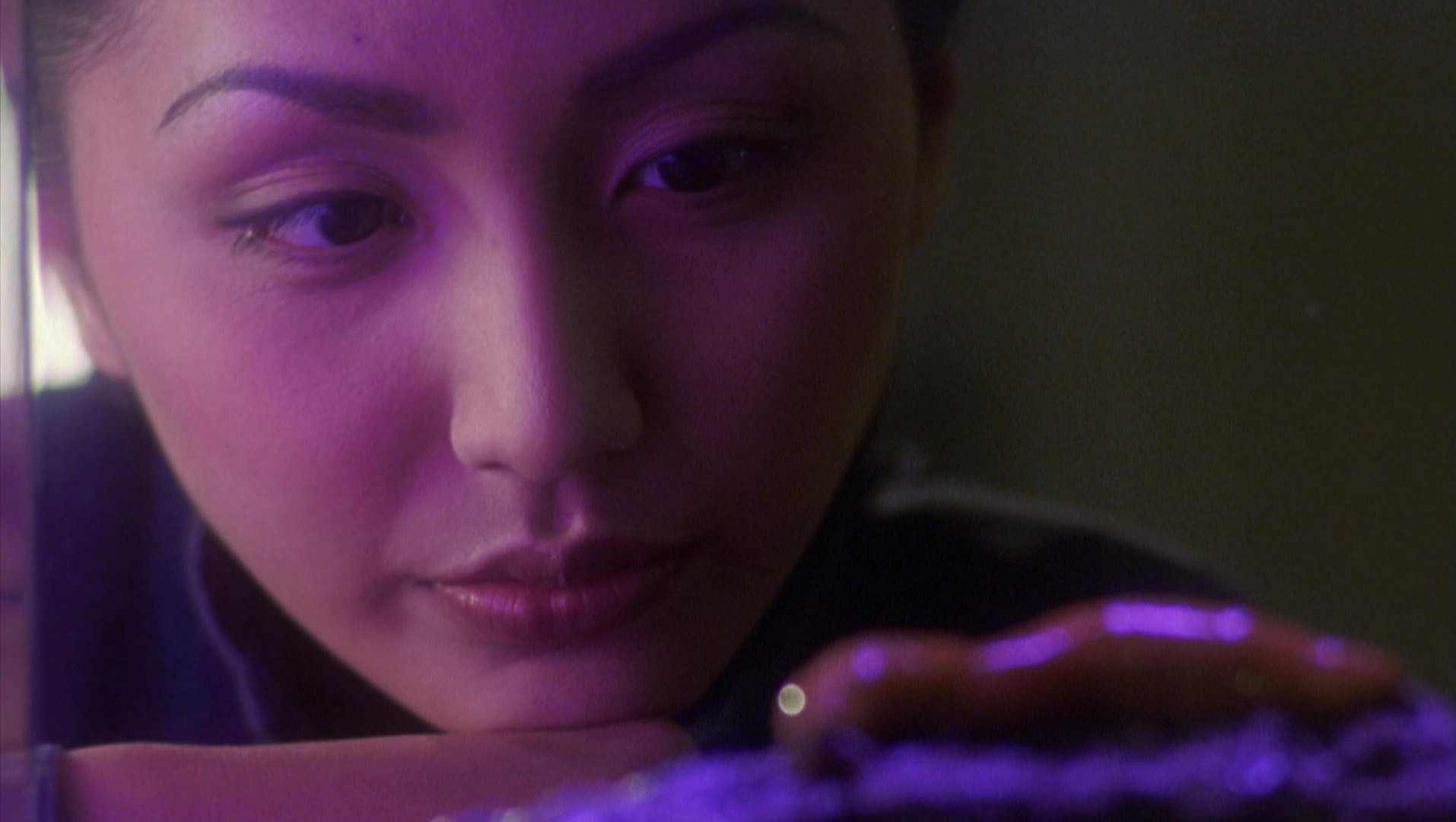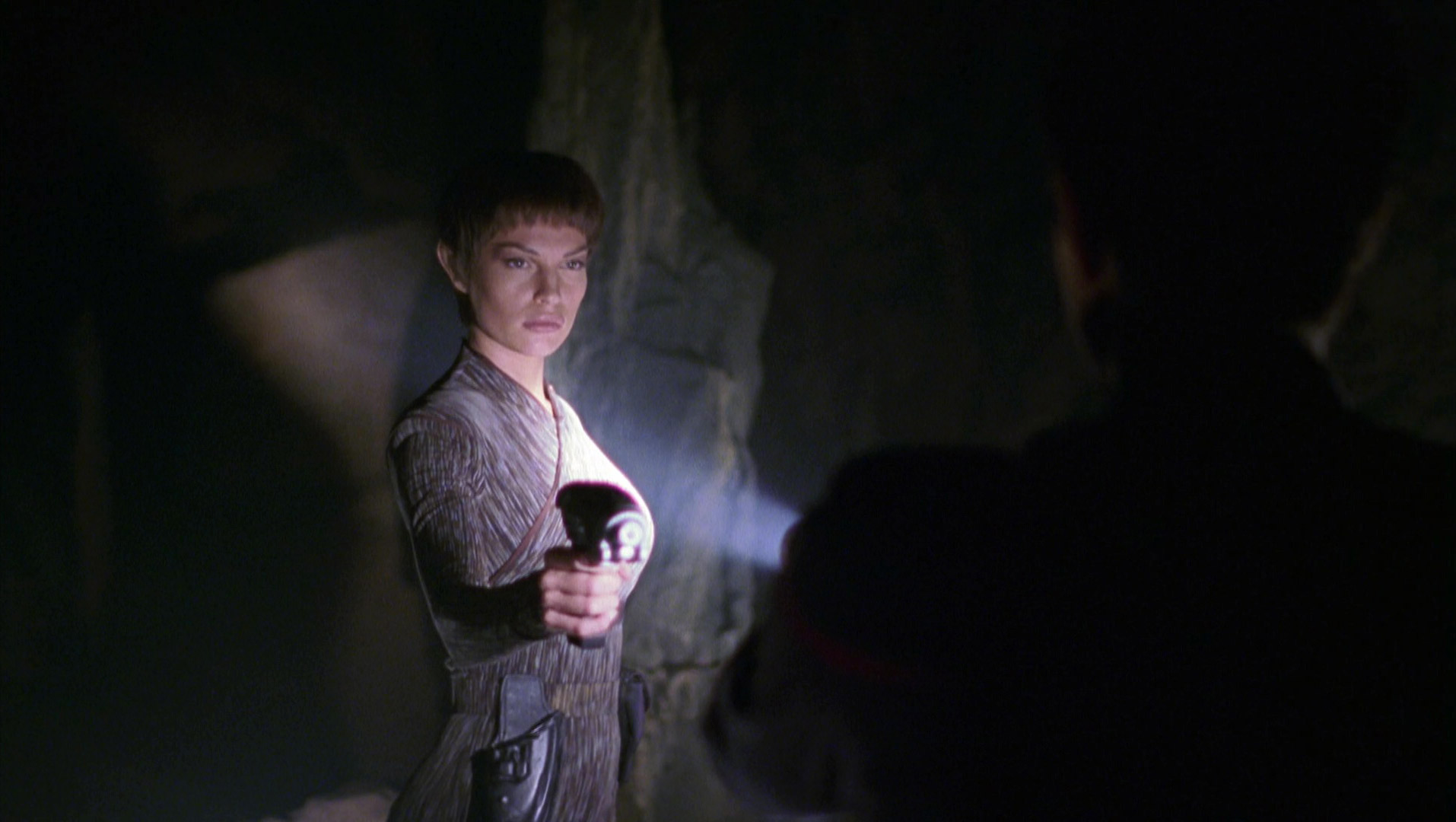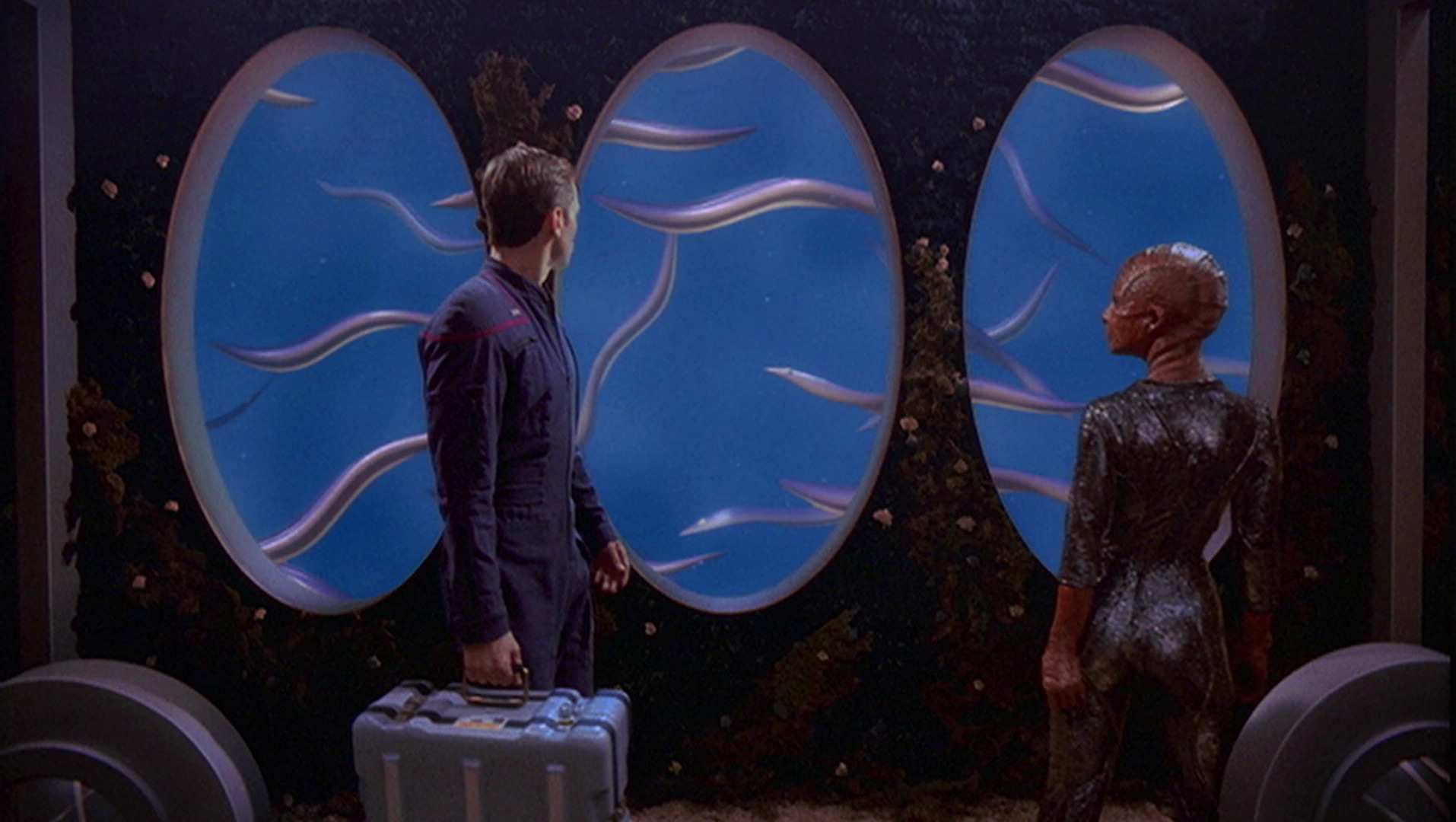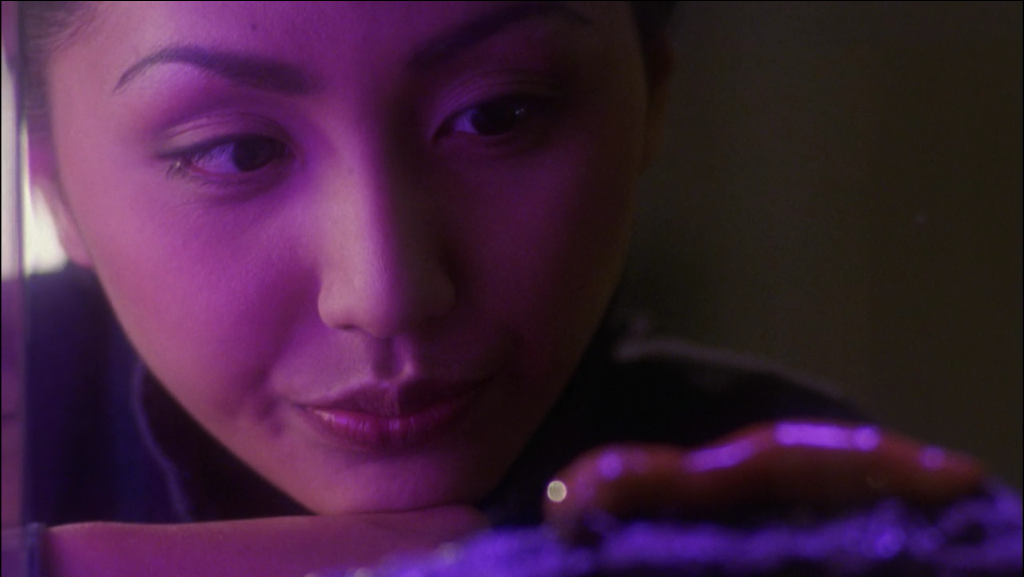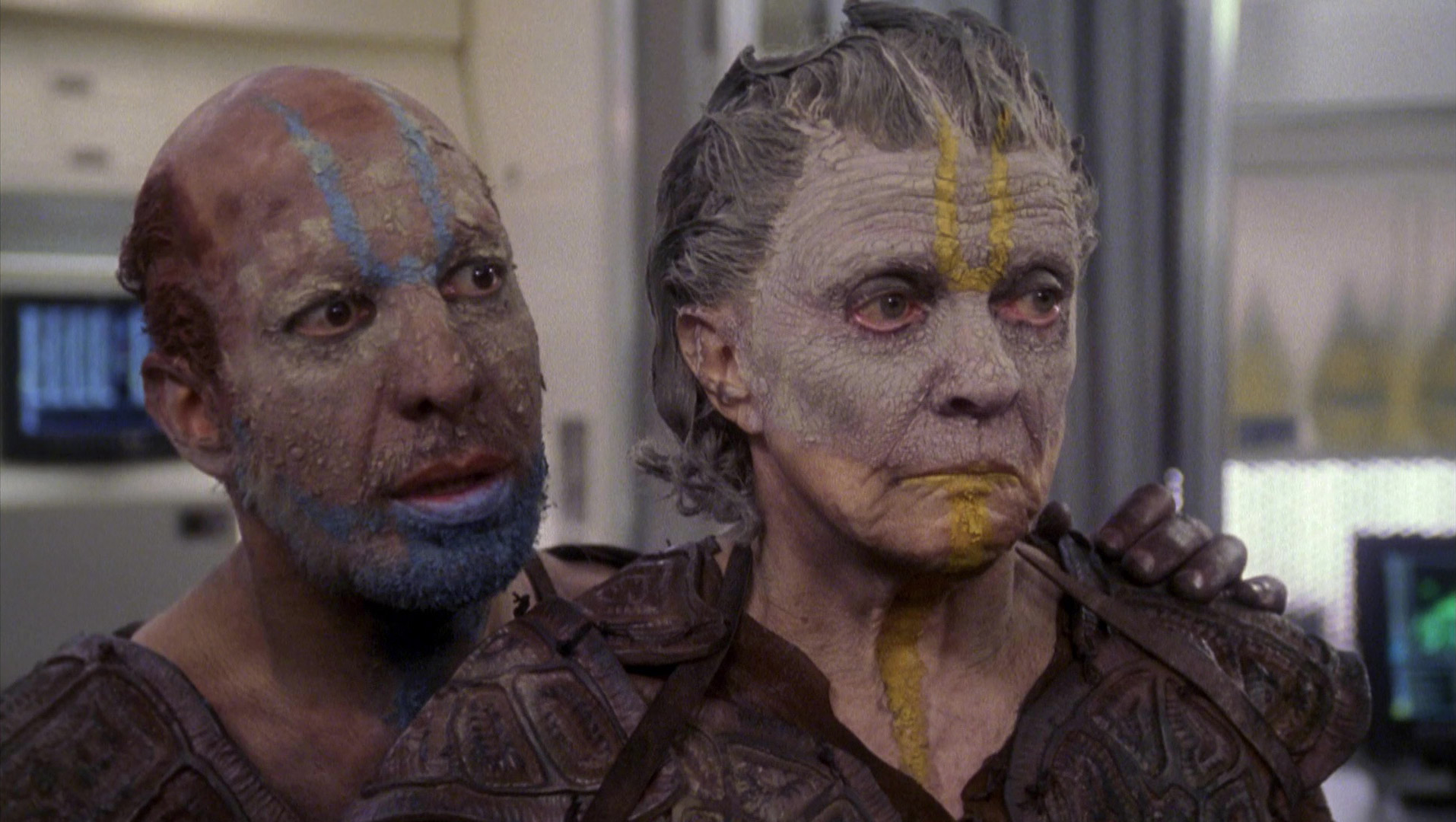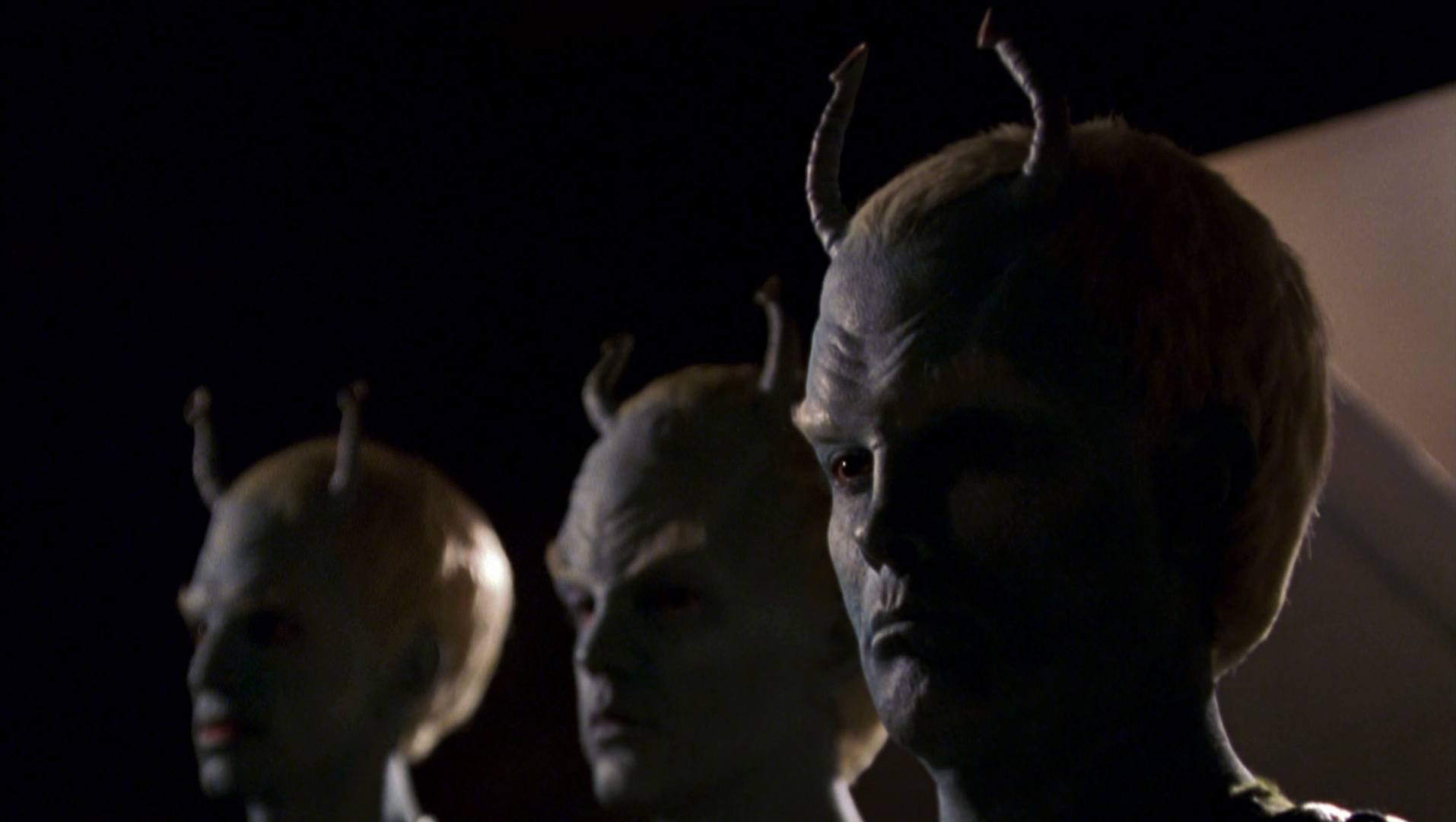I’ve always had a fondness for the underdog. For every The Wrath of Khan there’s a The Final Frontier and for every First Contact, an Insurrection. Whilst I wouldn’t be enough of a contrarian to state, for example, that Season 3 of the original series was superior to it’s forebears, I find there’s something quite fascinating about the many sections of Star Trek that for various reasons reached for something without quite grasping it. No doubt, the later seasons of TNG are technically superior to its debut and sophomore seasons, but there's something special about those early episodes nonetheless.
I have at some point seen every televised episode of Star Trek and broadly speaking, I like it all. It has however been over a decade since I watched most of it, TOS aside, meaning much of Trek from TNG to the backend of Enterprise have largely been forgotten by me. I’m sort of intent on going through each show, though not back to back (as in TOS to now), but as to what I'll take on after Enterprise... I have no idea. I'll see which one I fancy.
Enterprise had three advantages in being the first that I take on. Firstly, it’s relatively short, with four seasons seeming less daunting to me than seven. Secondly, I’m looking forward to the tonal upheaval it goes through between Seasons 2 and 3, then again between 3 and 4. Thirdly and finally is the above mentioned underdog factor. It’s never going to be the most loved of the many Star trek shows, but that doesn’t mean it doesn’t deserve some love.
So, enter: Enterprise. The show created in order to shake up a purportedly stale creative team and regain lost members of the viewing audience in one. Intended as a stripped back Trek, an answer to the excesses of the 24th century that had become the norm since the debut of Captain Picard's Enterprise D. No replicators, no shields, no universal translation and crucially, a crew with little or no experience of dealing with the kinds of things a five year mission into deep space might throw at them.
So…
ENTERPRISE:
Episode 01/02: BROKEN BOW
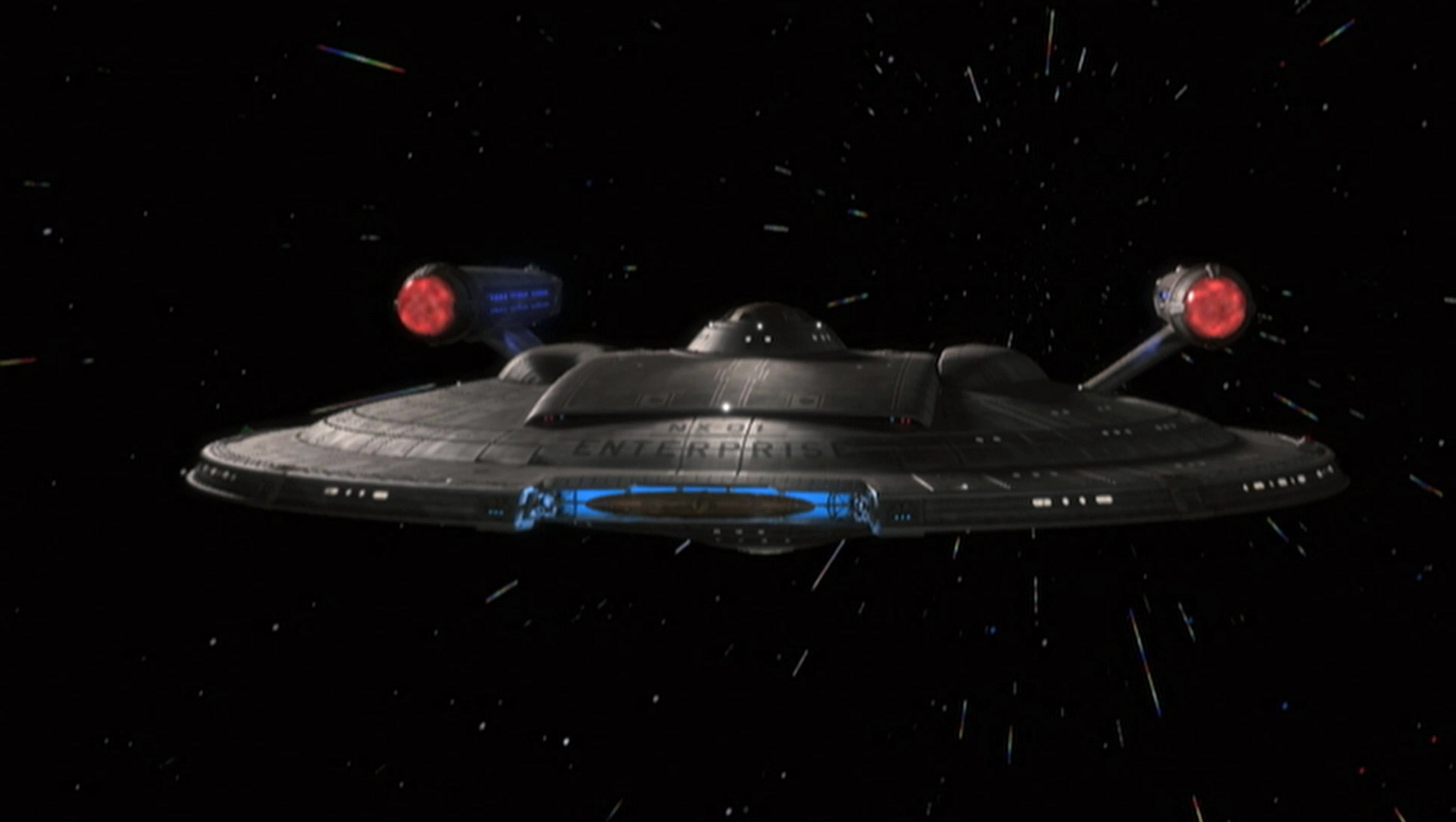
"I should have smelled trouble when I saw the swords and the armour."
More so than any other Star Trek pilot, Broken Bow is a statement of intent. The Cage, Encounter at Far Point, The Emissary and The Caretaker are all stories which are focussed on showing the viewer all the wonderful things that people can do in the future. Our proud starships are ready equipped with devastating weaponry and more than adequate defences, gourmet food can be summoned by voice command and humanity is but one race in a larger, happy family of aliens. More so, humans as a race have reached a utopian ideal, facing the unknown with open hearts and minds.
Broken Bow is bold in this regard. We have a vision of mankind that's waiting in the wings, with Vulcan handlers keeping them on a tight leash. Interstellar travel is a known possibility that mankind has been denied for a century due to its perceived immaturity. Transporters are brand new, as are phasers (phase pistols here), Warp 4.5 is spoken about in hushed, reverent tones and the Enterprise has ablative shielding rather than the expected energy shields. Enterprise is a show focussed on a Starfleet that's barely out of the cradle, with the Federation yet to come into existence.
There are times when this aspect of Enterprise’s premise can be lampshaded in a somewhat heavy handed manner, eliciting from me an internal groan, such as the short exchange around the start, centred around The Transporter:
TRAVIS: I heard this platform's been approved for bio-transport.
REED: I presume you mean fruits and vegetables.
TRAVIS: I mean Armoury Officers and Helmsmen.
REED: I don't think I'm quite ready to have my molecules compressed into a data stream.
TRAVIS: They claim it's safe.
REED: Do they indeed. Well, I certainly hope the Captain doesn't plan on making us use it.
TRAVIS: Don't worry, from what I'm told, he wouldn't even put his dog through this thing.
Otherwise though, Broken Bow just about succeeds in making this premise work. The transporter is used, ironically given the dialogue above, to transport Archer himself, but the cast and story sell it as an unusual and last-ditch solution. Everything from the workman-like uniforms to the 'plates and gantries' interior of the NX-01 help to give the impression that though Enterprise is recognisably Star Trek, it’s not the safe and steady Star Trek we are used to.
Where Broken Bow also succeeds is in the set up of the principal cast, who in their various debuts all get a little time centre-stage. There is at least a sense by the end of ninety minutes that each character is known, in broad strokes admittedly, enough so that I feel I'd like to watch more in order to get to know them. As with any ensemble cast there are characters who are clearly being set up as primaries (Archer, T’Pol, Trip) and secondaries (Reed, Mayweather) with Phlox and Hoshi falling somewhere in-between, yet each is given a moment to shine in a way that feels natural and believable.
"You're not speaking, yet I can hear you."
In any Star Trek show, there’s a tertiary silent character, that being whichever ship (or in one case, station) that the action largely takes place on. Enterprise is again successful in this regard. It’s clear that they built a lot of sets for this episode and the episodes director, James Conway spent a lot of time in them, figuring out how to shoot Star Trek in new and interesting ways. The NX 01 feels like a solid, believable, if not entirely secure space. The ship has a fresh feeling, functional aesthetic in the depiction of the bridge, engine room and living spaces (Archer’s quarters are far from spacious) extended to the starship’s attendant communicators, hand weaponry and shuttlecraft. This is low-tech Trek-tech, whilst still feeling like it has enough connective tissue with what follows it to be believable.
"You recommended a rest, a change of pace, didn't you?"
There’s also a healthy antagonism apparent in the writing. Clearly Archer, Tucker and T'pol are an attempt at recreating 1966 triumvirate of Kirk, McCoy and Spock, perhaps more obviously than in any other Star Trek show. I mean, hot headed heroic captain, his slightly bumpkin-like buddy and the disdainful Vulcan outsider… it’s nothing less than obvious, but it works largely because Archer, Trip and T’pol are basically Kirk, McCoy and Spock with the rough edges not yet sanded off. Enterprise presents us with a future humanity who haven’t quite yet learned to curb themselves, and a Vulcan race who perceive themselves as some kind of galactic authority, yet to be subsumed by and supplanted by the Federation. In both cases the original Star Trek interpretation of each is bent, not broken. Still recognisable enough to ring true, whilst different enough to retain interest.
Broken Bow also strikes a neat balance between nodding towards the past and setting up new elements for Enterprise's own future. In terms of the former, in many ways Broken Bow is a love letter to the original Star Trek series. We have Klingons, Starfleet personnel named ‘Williams, Leonard, Forrest’ and a Vulcan named ’T’os’, a pair of alien dancers barely clothed in liquid latex (the Great Bird would have loved it), a tendency to go for colourful lighting gels that Jerry Finnerman would have been proud of and the ever present Star Trek ethos that a sense understanding should come before violence. From the off we have a show determined to honour Gene Roddenberry’s original vision of Star Trek. Broken Bow is a thoroughly human adventure, grounded in character beats rather than technobabble.
That's not to say Enterprise doesn't have one foot firmly in the future, no pun intended given the background introduced regarding a tantalisingly named 'temporal cold-war'. The Suliban are a race that goes a little further than the much derided forehead latex associated with Star Trek in its alien designs. They look strange and unusually for a bipedal Star Trek alien, are able to move and behave in ways that are at times outright unsettling. Of course, their set-up is achieved as broadly as everything else in Broken Bow, but the gaps left by the end of the episode are, as with the crew of the NX-01 itself and the larger backdrop of Enterprise, intriguing rather than frustrating.
"May you find your way as pleasant."
20 years on then and Broken Bow stands as a successful episode of Star Trek and doesn’t collapse generally as a piece of television either. Any pilot of any show creaks in places as writers get used to playing on the actors strengths and explore the limits of the setting. Enterprise is no exception to this. Broken Bow does the job of an introduction though and in more than one place, achieves its goals with a certain amount of flair. So far, the elements any Star Trek show has to juggle (cast, effects, action, intelligence, drama and science) are all turning nicely in the air and I’m ready to follow the crew of the NX-01 on their voyage.
Thank you for taking the time to read. I've already watched the next episode (Fight or Flight) and I'm going to watch Strange New World over noodles right now. 1 writeup down, 97 more to do.
Happy times and places,
Richard S. Ta
Image reproduced with the permission of Trekcore.com
I have at some point seen every televised episode of Star Trek and broadly speaking, I like it all. It has however been over a decade since I watched most of it, TOS aside, meaning much of Trek from TNG to the backend of Enterprise have largely been forgotten by me. I’m sort of intent on going through each show, though not back to back (as in TOS to now), but as to what I'll take on after Enterprise... I have no idea. I'll see which one I fancy.
Enterprise had three advantages in being the first that I take on. Firstly, it’s relatively short, with four seasons seeming less daunting to me than seven. Secondly, I’m looking forward to the tonal upheaval it goes through between Seasons 2 and 3, then again between 3 and 4. Thirdly and finally is the above mentioned underdog factor. It’s never going to be the most loved of the many Star trek shows, but that doesn’t mean it doesn’t deserve some love.
So, enter: Enterprise. The show created in order to shake up a purportedly stale creative team and regain lost members of the viewing audience in one. Intended as a stripped back Trek, an answer to the excesses of the 24th century that had become the norm since the debut of Captain Picard's Enterprise D. No replicators, no shields, no universal translation and crucially, a crew with little or no experience of dealing with the kinds of things a five year mission into deep space might throw at them.
So…
ENTERPRISE:
Episode 01/02: BROKEN BOW

"I should have smelled trouble when I saw the swords and the armour."
More so than any other Star Trek pilot, Broken Bow is a statement of intent. The Cage, Encounter at Far Point, The Emissary and The Caretaker are all stories which are focussed on showing the viewer all the wonderful things that people can do in the future. Our proud starships are ready equipped with devastating weaponry and more than adequate defences, gourmet food can be summoned by voice command and humanity is but one race in a larger, happy family of aliens. More so, humans as a race have reached a utopian ideal, facing the unknown with open hearts and minds.
Broken Bow is bold in this regard. We have a vision of mankind that's waiting in the wings, with Vulcan handlers keeping them on a tight leash. Interstellar travel is a known possibility that mankind has been denied for a century due to its perceived immaturity. Transporters are brand new, as are phasers (phase pistols here), Warp 4.5 is spoken about in hushed, reverent tones and the Enterprise has ablative shielding rather than the expected energy shields. Enterprise is a show focussed on a Starfleet that's barely out of the cradle, with the Federation yet to come into existence.
There are times when this aspect of Enterprise’s premise can be lampshaded in a somewhat heavy handed manner, eliciting from me an internal groan, such as the short exchange around the start, centred around The Transporter:
TRAVIS: I heard this platform's been approved for bio-transport.
REED: I presume you mean fruits and vegetables.
TRAVIS: I mean Armoury Officers and Helmsmen.
REED: I don't think I'm quite ready to have my molecules compressed into a data stream.
TRAVIS: They claim it's safe.
REED: Do they indeed. Well, I certainly hope the Captain doesn't plan on making us use it.
TRAVIS: Don't worry, from what I'm told, he wouldn't even put his dog through this thing.
Otherwise though, Broken Bow just about succeeds in making this premise work. The transporter is used, ironically given the dialogue above, to transport Archer himself, but the cast and story sell it as an unusual and last-ditch solution. Everything from the workman-like uniforms to the 'plates and gantries' interior of the NX-01 help to give the impression that though Enterprise is recognisably Star Trek, it’s not the safe and steady Star Trek we are used to.
Where Broken Bow also succeeds is in the set up of the principal cast, who in their various debuts all get a little time centre-stage. There is at least a sense by the end of ninety minutes that each character is known, in broad strokes admittedly, enough so that I feel I'd like to watch more in order to get to know them. As with any ensemble cast there are characters who are clearly being set up as primaries (Archer, T’Pol, Trip) and secondaries (Reed, Mayweather) with Phlox and Hoshi falling somewhere in-between, yet each is given a moment to shine in a way that feels natural and believable.
"You're not speaking, yet I can hear you."
In any Star Trek show, there’s a tertiary silent character, that being whichever ship (or in one case, station) that the action largely takes place on. Enterprise is again successful in this regard. It’s clear that they built a lot of sets for this episode and the episodes director, James Conway spent a lot of time in them, figuring out how to shoot Star Trek in new and interesting ways. The NX 01 feels like a solid, believable, if not entirely secure space. The ship has a fresh feeling, functional aesthetic in the depiction of the bridge, engine room and living spaces (Archer’s quarters are far from spacious) extended to the starship’s attendant communicators, hand weaponry and shuttlecraft. This is low-tech Trek-tech, whilst still feeling like it has enough connective tissue with what follows it to be believable.
"You recommended a rest, a change of pace, didn't you?"
There’s also a healthy antagonism apparent in the writing. Clearly Archer, Tucker and T'pol are an attempt at recreating 1966 triumvirate of Kirk, McCoy and Spock, perhaps more obviously than in any other Star Trek show. I mean, hot headed heroic captain, his slightly bumpkin-like buddy and the disdainful Vulcan outsider… it’s nothing less than obvious, but it works largely because Archer, Trip and T’pol are basically Kirk, McCoy and Spock with the rough edges not yet sanded off. Enterprise presents us with a future humanity who haven’t quite yet learned to curb themselves, and a Vulcan race who perceive themselves as some kind of galactic authority, yet to be subsumed by and supplanted by the Federation. In both cases the original Star Trek interpretation of each is bent, not broken. Still recognisable enough to ring true, whilst different enough to retain interest.
Broken Bow also strikes a neat balance between nodding towards the past and setting up new elements for Enterprise's own future. In terms of the former, in many ways Broken Bow is a love letter to the original Star Trek series. We have Klingons, Starfleet personnel named ‘Williams, Leonard, Forrest’ and a Vulcan named ’T’os’, a pair of alien dancers barely clothed in liquid latex (the Great Bird would have loved it), a tendency to go for colourful lighting gels that Jerry Finnerman would have been proud of and the ever present Star Trek ethos that a sense understanding should come before violence. From the off we have a show determined to honour Gene Roddenberry’s original vision of Star Trek. Broken Bow is a thoroughly human adventure, grounded in character beats rather than technobabble.
That's not to say Enterprise doesn't have one foot firmly in the future, no pun intended given the background introduced regarding a tantalisingly named 'temporal cold-war'. The Suliban are a race that goes a little further than the much derided forehead latex associated with Star Trek in its alien designs. They look strange and unusually for a bipedal Star Trek alien, are able to move and behave in ways that are at times outright unsettling. Of course, their set-up is achieved as broadly as everything else in Broken Bow, but the gaps left by the end of the episode are, as with the crew of the NX-01 itself and the larger backdrop of Enterprise, intriguing rather than frustrating.
"May you find your way as pleasant."
20 years on then and Broken Bow stands as a successful episode of Star Trek and doesn’t collapse generally as a piece of television either. Any pilot of any show creaks in places as writers get used to playing on the actors strengths and explore the limits of the setting. Enterprise is no exception to this. Broken Bow does the job of an introduction though and in more than one place, achieves its goals with a certain amount of flair. So far, the elements any Star Trek show has to juggle (cast, effects, action, intelligence, drama and science) are all turning nicely in the air and I’m ready to follow the crew of the NX-01 on their voyage.
Thank you for taking the time to read. I've already watched the next episode (Fight or Flight) and I'm going to watch Strange New World over noodles right now. 1 writeup down, 97 more to do.
Happy times and places,
Richard S. Ta
Image reproduced with the permission of Trekcore.com
Last edited by a moderator:


